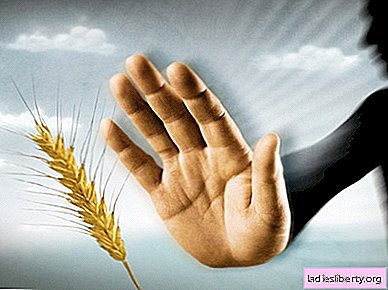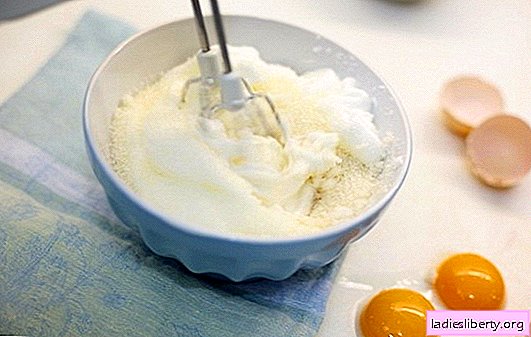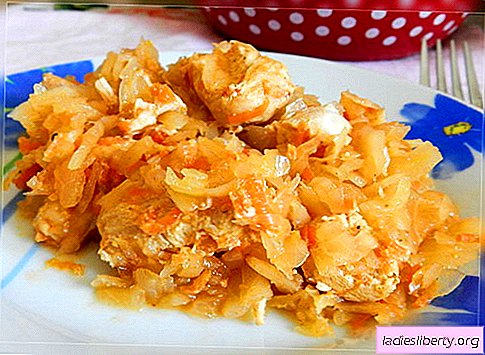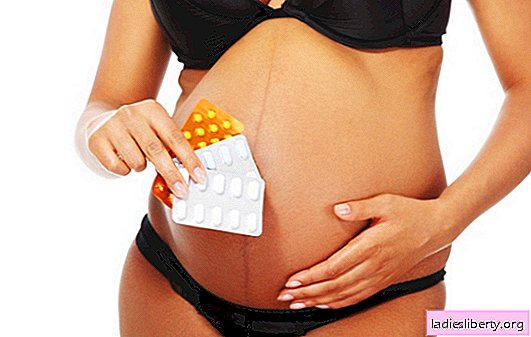
Child development at this age directly depends on the efforts and the attention that parents pay to this issue. Observations on many children show that children with whom they are intensively engaged (mom, dad, teachers in children's clubs) have more developed physical, cognitive and speech skills.
Also more developed are children who have older brothers or sisters (there is someone to follow the example).
But in this article we will focus on some average results. And there is nothing dramatic if you notice that your baby has not yet mastered any of the following. In any case, he will master everything.
But let's take a closer look at all the skills that a kid should master by this age.
What should be able to child in 2 years?
At the age of two years, children should already be able to navigate in space, that is, to understand that the subject is:
• in something or outside of something (a ball in a box, a bear in another room);
• indoors or outdoors;
• located vertically or horizontally;
• above or below.
The child should be able to characterize the quality of objects, to understand (to understand, not to pronounce) for example:
• that the cat is soft;
• shawl - prickly;
• napkin - dry or wet.
• tap water (or food in a plate) - cold or hot.
At 2 years old, the child should be able to recognize parts of the body, know and be able to show:
• legs;
• arms;
• torso;
• head.
Be able to recognize:
• main standard colors - red, white, green, blue, etc.
• numbers from 0 to 10;
• objects and objects - a bear, a doll, a machine, a house;
• shapes of objects - square, oval, asterisk, circle.
Some children may use fingers to count from 0 to 5 (although of course they often make mistakes when counting)
The development of speech in a child in 2 years
At 2 years of age, the grown-up little man begins at any opportunity to inform his parents about his: love and dislike. A typical 2-year-old's vocabulary averages about 50 words, although some children are able to know a lot more sayings. The child is already able to name dozens of familiar things (bed, chair, table, sofa), animals (cat, dog, bird, fish), friends by name (Aunt Masha, Uncle Vanya, girl Ira).
Although of course his diction is still imperfect and the baby says even simple words that are not quite intelligible or distort them in their own way (instead of hippopotamus - gabagot, instead of dog - abacus). Pavilno understand the child's speech at this age is often only able to his mother (less often - dad).
He may already know some foods and drinks, such as soup, porridge, banana, apple juice, tea, and milk. A child may notice a lack of things, for example: milk is gone, no cookies are eaten, dad is gone - there is none.
Two years is a time when a child is rapidly improving his vocabulary. Therefore, parents are recommended to keep a diary (writing down new words spoken by the kid in it) and sum up every three months. By age 2, a child must:
• speak in simple short phrases (give me a mom, the cat ran away, I don’t want to eat, I want a banana) - even if not quite clearly;
• correctly understand the requests of parents;
• perform simple tasks, such as: give a napkin, bring a ball, put it on a chair, do not get out of bed;
• 75% have an adult-understandable speech (that is, pronounce words so that their mother can understand).
Physical development of a child in 2 years
After 24 months of life, the child should be able to:
• stand upright on legs;
• not stumbling, do not run fast;
• easy to jump up with two legs;
• independently climb stairs sticking to the railing;
• stand on your left or right leg for a few seconds while holding your body weight;
• move in a circle and zigzags;
• confidently hold a pencil with your left or right hand;
• carefully eat with a spoon;
• build towers of 7-8 blocks;
• play ball (kick, throw).
Child nutrition in 2 years
At this age, the child should:
• eat 1/3 - 1/2 adult portions of food;
• enjoy the food decorated with funny shapes, multi-colored sauces or with an unusual coloring (cheese in the form of a bear, multi-colored pasta, cookies with colored glazed crumb);
• chew soft and medium hard food well;
• wash with soap and water before eating;
• assist parents in cooking (remove the peel from boiled potatoes, pluck the leaves from the lettuce, peel the peas, peel a banana).
A child at the age of two must still eat in the presence of parents, especially unfamiliar or consisting of large fragments.
First attempts to care for your own body.
It is from 2 years of age that doctors advise to teach a child to personal hygiene and caring skills for their own body. From the age of 2, children should begin to learn how to use a toothbrush and flossing. By the age of two, most children already have 20 milk teeth, so they must stop sucking their fingers and sticking them out of their mouths. From the age of two, the child must visit the dentist every 6 months to prevent dental diseases (caries and pulpitis easily affects children's milk teeth, and it is much easier to prevent these diseases than to cure later).
Two years is the time to teach a child to the toilet (potty).
Cognitive development of a child in 2 years
At 2 years old, a child should be able to:
• well understand speech, stories and fairy tales (of course, focused on children of this age);
• copy the movement of your favorite toys - bears, dolls, monkeys;
• recognize familiar objects in pictures and name them;
• add simple card puzzles (3-4 cards);
• call the items shown in the pictures;
• count from 1 to 3 and understand the meaning of these numbers;
• be able to show your age on fingers;
• know that the child is a boy or girl
Emotional development of a child in 2 years
By the age of two, crumbs are beginning to be interested in other children and try to make contact with them. Children become more talkative, active and sociable, try to play simple children's games with other children, and begin to understand and accept the rules. At the age of 2 years, it is extremely important to help the child to expand contacts, more often to praise, to help him in communicating with his peers. If the parents help the child to learn new communication skills, the child will be easier to join the children's team, it will be easy to contact with the children, it is easy to remain without parents in the child’s room with the nanny or the tutor. From 2 years of age the child should be accustomed to the daily routine. To help him calmly cope with new sensations, to introduce new acquaintances (friends of the child) to the family circle.
Two-year-old bullies love to hysterical often. Tantrums happen because the child has not learned to understand his emotions, has not yet fully acquired verbal skills, cannot properly express his anger, disappointment, fear or any other emotions. A good way to deal with hysterics is to distract the child’s attention. The child should simply be removed from the stimulator hysteria, provoking bad behavior and the problem will be quickly resolved.
The development of fine motor skills in a child in 2 years
At 2 years old, a child should be able to:
• pick up colored pencils and draw various scribbles;
• pick up baby safety scissors and try to cut paper;
• take large beads and string them on a thick thread (beads must be large so that the child cannot put them in his mouth);
• fasten and unzip;
• pour water into a plastic cup and pour it into a basin;
• build from wet sand pasyka of various shapes and sizes;
• pick up various shaped objects and insert them into suitable openings;
• try to fasten and unbutton buttons.
Child's sleep at 2 years
A two-year-old should sleep 11 hours a night and 2 hours a day. At the age of 2 years, children often experience daytime sleep, so it is necessary to create the most comfortable conditions for them. Parents can:
• change the infant bed to a nursery, a more spacious design with a more comfortable mattress;
• place a high chair next to the crib so that the child can put objects that distract him from sleep;
• make the bed with baby's pastel linen with the child’s favorite characters (before going to bed, to explain to the baby that, when he goes to bed, he helps the toys to rest;
• remove bright and distracting toys from the bed so that they do not interfere with falling asleep;
• install a shade net over the bed (tent);
• create favorable temperature conditions (use air conditioning or a fan in summer).
Cause for concern
If a child poorly understands the speech of the parents, does not pay attention to their requests or reacts to them inadequately, does not say a single word, does not interact with other children - you should pay attention to this and get expert advice.
The strange behavior of the little crumbs can be caused by:
• inflammatory processes in the middle and inner ear;
• poor well-being of the baby;
• delayed speech development;
• symptoms of autism;
• other medical problems that should and can be easily resolved in childhood.
In these and any such cases, parents should seek medical help.











